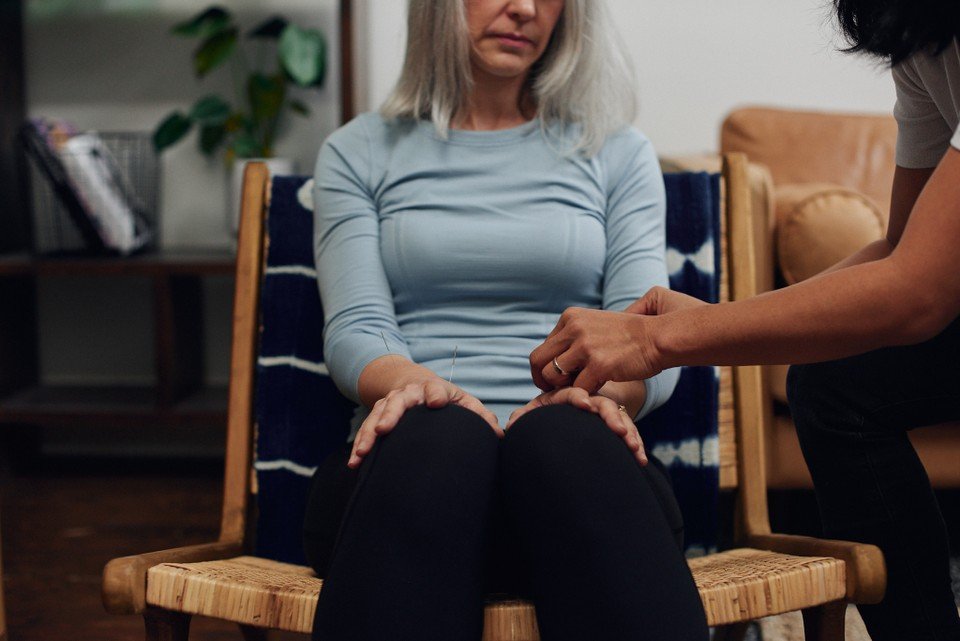The Soothing Touch: Acupuncture for Menopause
In today's fast-paced world, the quest for holistic and accessible healthcare solutions has never been more critical, especially for women navigating the challenging waves of menopause. Amidst the myriad of treatments available, acupuncture emerges as a beacon of hope, offering a natural, effective remedy right at the comfort of your home. This blog delves into the transformative power of acupuncture for menopause, tailored for the modern woman who values convenience without compromising on care.
Understanding Menopause
Menopause signifies a significant milestone in a woman's life, marking the end of her menstrual cycles. This transition, typically occurring between the ages of 45 and 55, brings about a spectrum of symptoms ranging from hot flashes and night sweats to mood swings and sleep disturbances. These changes are primarily due to fluctuating hormone levels, particularly estrogen and progesterone.
Acupuncture: A Glimpse into Ancient Wisdom
Acupuncture, a cornerstone of traditional Chinese medicine, involves the insertion of fine needles into specific points on the body to balance the flow of Qi (vital energy). This millennia-old practice has gained widespread acclaim for its ability to alleviate various health issues, with menopausal symptoms being no exception.
The Science Behind Acupuncture for Menopause
Recent studies illuminate acupuncture's efficacy in mitigating menopausal symptoms. A systematic review and meta-analysis published in the "Journal of the American Medical Association" highlighted acupuncture's potential in reducing hot flashes, night sweats, sleep disturbances, and emotional symptoms associated with menopause. By targeting specific energy meridians, acupuncture aids in rebalancing the body's hormonal fluctuations, thus easing the transition through menopause.
In-Home Acupuncture: Tailored Convenience
Recognizing the unique needs of women, Chipperfield Mobile Physiotherapy specializes in providing personalized acupuncture treatments within the comfort and privacy of your home. This bespoke approach not only addresses the physical and emotional facets of menopause but also adds an unparalleled layer of convenience and accessibility.
The Benefits of Choosing In-Home Acupuncture
Personalized Care: Each session is customized to cater to your specific symptoms and wellness goals, ensuring a holistic treatment experience.
Flexibility: Appointments are scheduled at your convenience, allowing you to receive treatment without disrupting your daily routine.
Comfort: Being in a familiar environment can enhance the therapeutic effects of acupuncture, fostering relaxation and healing.
Privacy: Our discreet, professional service ensures your health and well-being are addressed with the utmost confidentiality and sensitivity.
The Process: What to Expect
During your initial consultation, a certified acupuncturist will assess your health history and menopausal symptoms to craft a tailored treatment plan. Each session typically lasts between 45 minutes to an hour, where fine, sterile needles are gently inserted into specific points on the body. While experiences vary, many report a profound sense of relaxation and well-being post-treatment.
Our Registered Acupuncturist Joey Chan treating a client in her home.
Embracing a Holistic Journey
Incorporating acupuncture into your menopause management strategy can significantly enhance your quality of life. Alongside acupuncture, adopting a balanced diet, regular exercise, and stress reduction techniques can provide a comprehensive approach to navigating this transformative phase with grace and vitality.
Conclusion
As we continue to explore and embrace the intersection of ancient wisdom and modern convenience, acupuncture for menopause stands out as a testament to the timeless relevance of holistic healthcare. Our In-Home Rehabilitation service is dedicated to empowering women through this journey, ensuring that every woman can access the care she needs, when she needs it, right where she is.
Sources
"Acupuncture for Menopause: A systematic review and meta-analysis," Journal of the American Medical Association. https://jamanetwork.com/
"Understanding Menopause," National Institute on Aging. https://www.nia.nih.gov/health/understanding-menopause
"The Benefits of In-Home Acupuncture," Healthline. https://www.healthline.com/health/in-home-acupuncture-benefits

